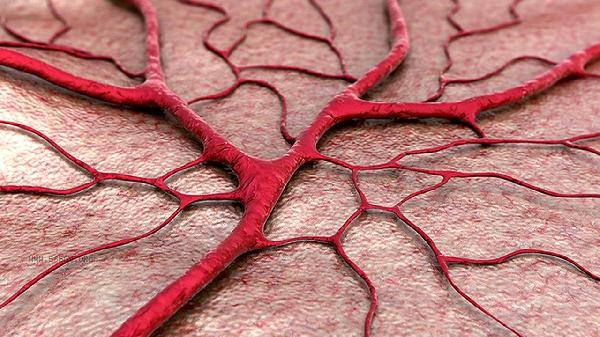The alveolar capillary membrane consists of six layers, including the alveolar cortex, epithelial basement membrane layer, interstitial layer, endothelial basement membrane layer, endothelial cell layer, and surfactant layer.
1. Alveolar cortex:

The alveolar cortex is mainly composed of type I alveolar cells and type II alveolar cells. Type I alveolar cells are flat and have a large coverage area, responsible for gas exchange; Type II alveolar cells secrete surfactants to reduce surface tension and prevent alveolar collapse. These two types of cells jointly maintain the stability of alveolar structure.
2. Epithelial basement membrane layer:
The epithelial basement membrane layer is located below the alveolar epithelial cells and is composed of components such as collagen and glycoproteins. This layer provides mechanical support for epithelial cells, while also participating in cell signaling and selective permeability of substances, playing an important role in maintaining the integrity of alveolar structure.
3. Interstitial layer:
The interstitial layer is located between the epithelial basement membrane and the endothelial basement membrane, containing elastic fibers, collagen fibers, and a small amount of stromal cells. This layer provides necessary space for gas exchange and participates in the elastic contraction function of lung tissue, playing a buffering and supporting role during breathing.

4. Endothelial basement membrane layer:
The endothelial basement membrane layer has a similar structure to the epithelial basement membrane layer, but is thinner in thickness. This layer provides an attachment surface for capillary endothelial cells, regulates vascular permeability, and participates in angiogenesis and repair processes, which is crucial for maintaining microcirculation function.
5. Endothelial cell layer:
The endothelial cell layer is composed of a single layer of flat endothelial cells, with tight junctions between cells. This layer directly participates in the process of gas exchange, while secreting various bioactive substances, regulating vascular tone and local blood flow, and playing a key role in pulmonary circulation.
6. Surface active substance layer:
The surface active substance layer covers the inner surface of the alveoli and is mainly composed of phospholipids and proteins. This layer significantly reduces the surface tension of alveoli, prevents alveolar collapse at the end of exhalation, and has immune defense function, which can neutralize harmful substances inhaled. The structural integrity of alveolar capillary membranes is crucial for lung function. Smoking and exposure to harmful gases should be avoided in daily life, moderate exercise should be maintained to enhance lung capacity, and attention should be paid to preventing respiratory infections. Eating foods rich in vitamins C and E, such as citrus fruits and nuts, can help protect lung tissue. Regular lung function tests are of great significance for early detection of lung lesions, especially for those who have been exposed to dust for a long time or have chronic cough symptoms, who should pay more attention to physical examinations.









Comments (0)
Leave a Comment
No comments yet
Be the first to share your thoughts!